Meeting Smart Factory Trends And Industry 4.0 Upgrades Requirements in South Korea with Automated Pallet Exchange
Your factory floor is a complex dance of machinery and people. But aging equipment, rising labor costs, and the constant pressure to be more efficient feel like a tightening vise. You know automation is the future, but a wrong investment can set you back years. Every unexpected breakdown or bottleneck costs you money and market share. Your competitors in regions like South Korea are already embracing smart factory concepts, making their operations leaner and more responsive. You worry about falling behind, burdened by legacy systems and fluctuating costs. What if you could target a specific, high-impact area of your logistics and see immediate improvements in efficiency, safety, and data integration? Let's talk about how a strategic piece of automation, like an automated pallet exchanger, can be a powerful first step in your Industry 4.0 journey.
Automated pallet exchange systems help meet smart factory and Industry 4.0 requirements by replacing manual, repetitive tasks with a reliable, high-speed process. This integration boosts operational efficiency, enhances worker safety, and provides crucial data points for production monitoring. For demanding markets like South Korea, this technology addresses labor challenges and ensures seamless integration with existing automated systems like AGVs and warehouse management systems (WMS), forming a key building block for a fully connected smart factory.
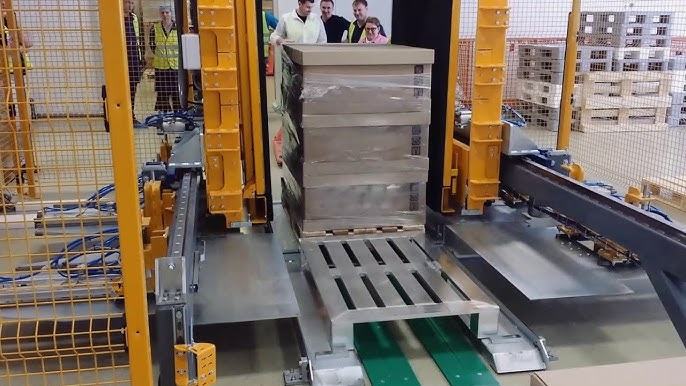
This might sound specific, but the principles behind this investment apply to any forward-thinking industrial leader, whether you're in electronics in South Korea or steel in Mexico. I've seen firsthand how a single, well-chosen upgrade can create a ripple effect of positive change. When I started my journey, first as an engineer and then as a factory owner, I learned that the most successful upgrades are the ones that solve multiple problems at once. They don't just replace a manual task; they make the entire process smarter, safer, and more reliable. Let's break down how this works and what it could mean for your operation.
How can automated pallet exchange solve labor shortages and improve safety in advanced economies like South Korea?
Finding and retaining good workers is a global challenge. In my years in this business, I've seen it everywhere. Manual pallet handling is tough, repetitive work. It leads to high staff turnover and the constant risk of costly injuries. You find yourself always training new people. And every time an accident happens, it hits morale, productivity, and your bottom line. It's a cycle that many factory owners feel stuck in.
Automated pallet exchange directly addresses labor shortages by taking over the physically demanding task of transferring goods between pallets. This frees up your valuable team members for more complex, value-added roles where they can use their minds, not just their muscles. It also drastically reduces the risk of musculoskeletal injuries from bending and lifting, creating a safer work environment. In many cases, this can lead to lower insurance premiums and fewer lost workdays.
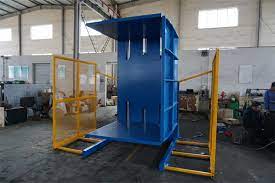
A Deeper Look at the Impact on Labor and Safety
Let's consider a market like South Korea. They have a rapidly aging population and some of the highest labor costs in Asia. For manufacturers there, automation isn't a luxury; it's a survival strategy. They must get the most out of every employee. By automating a physically taxing job like pallet swapping, they can re-assign that worker to a role like quality control or machine monitoring. This not only makes the operation more efficient but also makes the job more engaging for the employee, which helps with retention.
This same principle applies everywhere, even in markets with different labor dynamics. As a business owner, your most valuable asset is your team's expertise. You want your experienced people focused on maintaining complex machinery or optimizing production flow, not performing a manual task that a machine can do faster and more safely.
I remember a client who ran a large distribution center. They were facing constant workers' compensation claims from back injuries in their shipping department. The costs were piling up, and morale was low. After we installed an automated pallet inverter, their injury-related claims dropped by over 90% within the first year. The machine practically paid for itself in saved insurance costs and prevented downtime alone.
Let's break down the improvements in a more structured way:
| Metric | Manual Pallet Handling | Automated Pallet Exchange |
|---|---|---|
| Safety Risk | High (back strain, repetitive motion injury, crushed feet) | Very Low (operator is removed from the process) |
| Labor Requirement | 1-2 workers per station | 1 worker overseeing multiple machines |
| Consistency | Varies by worker, time of day, and fatigue | Perfectly consistent, 24/7 operation |
| Employee Role | Manual, repetitive labor | Skilled operator, technician, problem-solver |
| Product Damage | Higher risk from dropping or improper handling | Minimal risk due to controlled, gentle motion |
The goal of this type of automation is not to replace people, but to elevate their roles. It removes the most dangerous and least desirable tasks from their daily work. This creates a safer, more stable, and more productive workforce. For a leader focused on long-term growth, a stable and skilled workforce is the foundation of everything.
What are the key ROI metrics to consider when investing in automation like a pallet exchanger?
As a business owner, you live and die by the numbers. I know this from my own experience building my company. You've seen proposals for new equipment that promise the world, but you need to see a clear path to profitability. You need to cut through the marketing talk and calculate the real return on investment (ROI). It's not just about spending money; it's about investing it where it will generate the best returns and strengthen your entire operation.
The key ROI metrics for an automated pallet exchanger extend far beyond simple labor savings. To see the full picture, you must also calculate gains from increased throughput, reduced product damage, improved workplace safety (which means lower insurance and compensation costs), and even optimized use of your valuable warehouse space. When I work with clients, we run these numbers together. A comprehensive analysis often reveals a payback period of 18 to 36 months, which is an excellent return for a long-term capital asset.
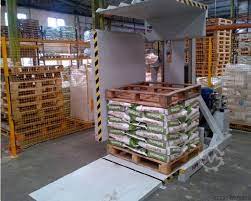
Calculating the True Return
A smart entrepreneur like you knows that a feasibility analysis has to be rigorous. Let's break down the calculation into two parts: the hard numbers you can easily quantify, and the softer, strategic benefits that are just as important for long-term success.
Tangible ROI (The Hard Numbers)
These are the direct savings and earnings you can track on a spreadsheet.
- Direct Labor Savings: This is the most obvious one. Calculate the fully-loaded cost of an employee (wage + benefits + taxes + insurance) and multiply it by the number of hours per day you'll save.
(Hourly Cost x Hours Saved) x Operating Days/Year = Annual Labor Savings. - Increased Throughput: An automated system is faster than a manual one. If you can process more pallets per hour, that means you can ship more products.
(New Pallets/Hour - Old Pallets/Hour) x Profit Margin per Pallet x Operating Hours/Year = Additional Annual Profit. - Reduced Product Damage: Manual handling leads to mistakes. Products get dropped, scraped, or crushed. A machine's movements are precise and gentle.
(Annual Value of Handled Goods) x (% Damage Reduction) = Annual Savings from Scrap Reduction.I worked with a steel coil distributor who reduced edge damage by 3% after automating their pallet transfer process. That 3% was pure profit and paid for the machine in just over a year. - Lower Injury-Related Costs: This includes lower insurance premiums, fewer payouts for compensation claims, and no lost productivity from absent workers. This figure can be surprisingly large.
Here's a simplified example:
| ROI Component | Calculation Example | Annual Value |
|---|---|---|
| Labor Savings | 1.5 employees @ $40k/year fully loaded | $60,000 |
| Throughput Gain | 10 extra pallets/day @ $50 profit/pallet | $125,000 |
| Damage Reduction | 1% reduction on $5M of goods | $50,000 |
| Injury Cost Savings | Avoided one major claim | $25,000 |
| Total Annual Return | $260,000 |
If the machine costs $400,000, the payback period is just over 18 months.
Intangible ROI (The Strategic Value)
These benefits don't always show up on a P&L sheet immediately, but they are critical for growth.
- Process Reliability: Your output becomes predictable. This helps you plan better and make promises to your customers that you can keep.
- Improved Employee Morale: Taking away the worst jobs shows you value your people's well-being. A happier team is a more productive team.
- Foundation for Future Automation: Once one part of your line is automated and "speaking the language" of data, it's much easier to connect the next piece.
- Enhanced Company Image: A modern, clean, safe factory impresses customers, partners, and potential new hires.
When you combine the hard numbers with the strategic value, the decision to invest in the right automation becomes clear. It's not a cost; it's a catalyst for growth.
How does integrating pallet exchange systems fit into a broader Industry 4.0 strategy for a factory?
You hear the terms "Industry 4.0" and "Smart Factory" all the time. It sounds exciting, but it can also feel overwhelming and incredibly expensive. It's easy to wonder if it's just a buzzword used by consultants, or if it's a tangible strategy you can actually implement. And the biggest question is always: where do I even start without having to rip and replace my entire production line?
Integrating a pallet exchange system is a practical, modular first step into the world of Industry 4.0. The key is to understand that modern machines are not just mechanical tools; they are data-generating assets. They are designed to connect with your factory's digital ecosystem, like your MES (Manufacturing Execution System) and WMS (Warehouse Management System). They provide a constant stream of real-time data on throughput, cycle times, and operational status. This data enables the informed, instant decision-making that is the true heart of a smart factory.
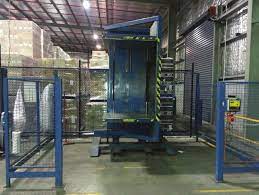
Building Your Smart Factory, One Piece at a Time
Industry 4.0 is not about buying a single, magical "smart factory" solution. It's about building a network of connected devices that talk to each other and provide you with a clear view of your entire operation. Think of your factory as a living organism. An automated pallet exchanger acts like a sensory organ, feeding crucial information back to the brain—your central management systems.
This directly addresses your goal of advancing digitalization. Here’s how a seemingly simple machine contributes to the big picture:
- It Becomes an IoT Device: The machine's PLC (Programmable Logic Controller) is the local brain. It's packed with sensors that monitor motor temperature, hydraulic pressure, cycle counts, and error codes. This is the raw data of the Internet of Things (IoT).
- It Connects to Your MES/WMS: The PLC communicates this data to your higher-level systems. When a pallet is successfully exchanged, it sends a "process complete" signal to the MES, which can automatically update inventory levels in the WMS. This eliminates manual data entry and potential errors.
- It Enables Predictive Maintenance: This is a huge one for any factory owner dealing with aging equipment. By tracking sensor data over time, you can spot trends. Is a motor running hotter than usual? Is a hydraulic pump's pressure fluctuating? This data can trigger a maintenance alert before the component fails, allowing you to schedule repairs during planned downtime. This is how you achieve your goal of 95% equipment uptime.
- It Feeds Big Data Analytics: Over months and years, the accumulated data from all your connected machines becomes a goldmine. You can analyze it to identify hidden bottlenecks, optimize the flow of materials through your plant, and build smarter production schedules. This is the foundation of the "smart排产平台" you aim for.
Here's the data flow in a simple Industry 4.0 setup:
| Data Stage | Description | Your Benefit |
|---|---|---|
| 1. Collection | Sensors on the pallet exchanger gather data (cycle time, faults, etc.). | Raw operational facts. |
| 2. Communication | The PLC sends this data to your local network (Ethernet/IP, Profinet). | Data is accessible. |
| 3. Integration | Your MES/SCADA system reads the data, links it to a specific work order. | Contextualized information. |
| 4. Analysis | Software analyzes trends, flags anomalies for predictive maintenance. | Actionable insights. |
| 5. Visualization | A dashboard shows you real-time status and key performance indicators (KPIs). | Full operational visibility. |
You don't have to do it all at once. Start with one machine. Get it connected. Prove the value through improved uptime and efficiency. Then, connect the next machine. This incremental approach is how you build a powerful, resilient smart factory without breaking the bank.
What customization options are available to adapt automated systems for heavy-duty industries like steel?
Your operation isn't a cleanroom assembling microchips. It's a steel mill. It's hot, it's dusty, and you are moving immense weight every single day. I've been in plants like yours. You've probably looked at standard automation equipment and thought, "That would crumble in my environment." You're absolutely right. You don't need just any equipment; you need equipment that is as tough and resilient as the products you make.
Standard automated systems are simply not built for the demands of the steel industry. This is where partnership with an experienced engineering team becomes critical. As my slogan says, we provide a "TOTAL SOLUTION FOR WRAPPING MACHINE" and handling equipment. This means we don't just sell a product off the shelf. We start with the customer's unique challenge. For heavy-duty applications, pallet exchangers, tilters, and wrapping systems must be engineered from the ground up with reinforced frames, higher capacity motors and hydraulics, specialized gripping mechanisms for unconventional loads like steel coils, and enhanced sealing to protect sensitive electronics from abrasive dust and moisture.
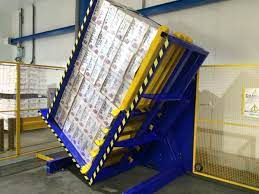
Engineering for the Toughest Environments
When a client from a heavy industry like steel comes to me, the conversation is completely different. We don't talk about standard pallet sizes; we talk about coil diameters and wire bundle weights. We focus on engineering a solution that can withstand the specific rigors of their plant. This is what separates a supplier from a true strategic partner.
Here are the key areas where customization is not just an option, but a necessity for the steel industry:
- Massive Load Capacity: A standard pallet inverter might handle 1,500 kg (about 3,300 lbs). In your world, a single steel coil or a pallet of wire can be 5, 10, or even 20 tons. This requires a complete re-engineering of the machine's structure. We use thicker steel, add reinforcement gussets, and use finite element analysis (FEA) software to simulate stress points and ensure the frame will not fail under load. The hydraulics, motors, and gearboxes are all upsized accordingly.
- Unconventional Load Shapes: You're not moving neat stacks of boxes. You're handling round, heavy coils or irregularly shaped bundles of steel parts. A standard flat clamping plate won't work. We design custom solutions like V-saddles to cradle coils securely, or specialized hydraulic clamps that conform to the shape of the load. Sometimes, we integrate the pallet exchange function with a tilter or an upender to orient the product correctly for the next process step, like strapping or wrapping.
- Extreme Environmental Resistance: Dust, especially metallic dust, is the enemy of electronics and moving parts.
- Sealing: We use IP65 or higher rated enclosures for all control cabinets. Bearings are sealed, and we use protective bellows to cover hydraulic rams and linear guides, preventing abrasive dust from causing premature wear.
- Temperature: If the machine is located near a heat source like a furnace or cooling line, we use high-temperature rated wiring, sensors, and hydraulic fluid to ensure reliable operation.
- Integration with Heavy Equipment: Your material flow relies on overhead cranes and high-capacity forklifts. We design the machine's loading and unloading zones to match. This might mean a floor-level design for easy forklift access or a raised platform with specialized guides to align with a crane's C-hook.
Here is how a heavy-duty solution compares to a standard one:
| Feature | Standard System (Logistics) | Heavy-Duty System (Steel) |
|---|---|---|
| Capacity | 1,000 - 2,000 kg | 5,000 - 20,000+ kg |
| Frame | Standard structural steel | Reinforced, oversized, FEA-verified |
| Load Handling | Flat clamping plates | Custom V-saddles, specialized clamps |
| Environment | Clean, indoor (IP54) | Dusty, hot, wet (IP65+) |
| Power System | Standard electric/hydraulic | Oversized motors, high-pressure hydraulics |
| Integration | Conveyors, AGVs | Overhead cranes, heavy forklifts |
I remember working with a steel wire manufacturer just like you. Their biggest challenge was safely palletizing and wrapping large, heavy coils of wire. The manual process was slow, unsafe, and led to product damage. We didn't just sell them a wrapper. We designed a complete, integrated station: a heavy-duty chain conveyor, a hydraulic tilter to orient the coil, and a robust orbital wrapping machine. We became their partner in solving a core business problem. That is the philosophy that has allowed me to grow my business by helping my clients grow theirs.
Conclusion
Investing in smart automation like pallet exchange is more than an upgrade; it’s a strategic move towards a safer, more efficient, and future-proof operation.



